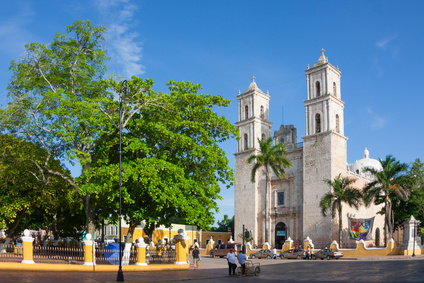 My journey started in Havana – probably the safest capital in Latin America. The Castro regime has put so many cops on the streets that I was instantly told from the very beginning that any assault on a traveller is unthinkable. Scams, theft, yes. But in terms of violence, it is pretty obvious on the streets of Havana who is the boss.
My journey started in Havana – probably the safest capital in Latin America. The Castro regime has put so many cops on the streets that I was instantly told from the very beginning that any assault on a traveller is unthinkable. Scams, theft, yes. But in terms of violence, it is pretty obvious on the streets of Havana who is the boss.
Then I flew in to Yucatan, Eastern Mexico. As I wait in the queue for passport control, a guy in front of me smacks another one in the face real hard, and they both get taken away. That’s still in the international airspace. It’s another country here, everybody get your passports ready.
In the evening I went to a bar. The waiter entertained American tourists by pulling out a deactivated revolver and aiming it at people while his colleague would throw a metal tray on the floor as hard as he could. It was all a good harmless laugh, but it was also the beginning of my journey through the real gun culture.
Both in Havana and Yucatan I only saw handguns on cops’ hips. In Chiapas, a little further south, I advanced to Level 2. The area had suffered some turbulence due to the Zapatista rebellions of the Maya population. In awe, I got my first sight of 3-4 men police squads armed with M4 carbines and M16 assault rifles. After watching a video about the rebellion, and finding myself in a Zapatista village by accident, I understood why they were there.
Still, that was just a very localized reaction to an extraordinary situation, not a status quo. Once I crossed to Guatemala, things really did change.
The border was not even a border – just a walk through. It resembled a refugee checkpoint. Could have easily not even shown the passport. A different feel straight away. Angry gangsta reggaeton blasting out, a wanted “armed and dangerous” poster on the wall, dirty cowboys selling USD, hordes of counterfeit sellers.
Level 3. Full Guatemala of guns. First, there were M16s carried by the police. An M16 was literally the first thing I saw in Guatemala after crossing the border. Four cops at the gas station were carrying them by the sight-handles, sipping coffee like a bunch of businessmen with briefcases.
But that’s kind of normal. There are plenty of countries even in the developed world where you can see guns, as anyone who has ever flown through Heathrow Airport in London will know.
But then there were the shotguns and they were a lot more confusing. They were everywhere – at museums, stations, pharmacies, even McDonalds. The confusing part wasn’t as much gun itself (although that too, but I will come to that later) as the people who carried them. Who were they? Collectively called “security” they included anyone from fifteen to sixty years old. Very loosely uniformed (a shirt and a baseball cap), I doubt they were well-trained or underwent extensive trigger happiness tests. I once asked a kid with a shotgun bigger than him if I could take a photo, while he was nervously guarding a truck. For a few seconds his face showed extreme confusion: to be friendly to a tourist or to shout “contact!!” down his (non-existent) radio? In the end he frowned and muttered an angry “no” through his clenched teeth.
This one time I trekked a volcano and the guide shop gave me a shotgun escort because the path wasn”t too safe. That kid was just as young, 16 at the most. As I braved the path I kept thinking, maybe I should just take the shotgun and let him tag along with my walkman? It was a ridiculous, and a bit unnerving, situation.
If you see that outside McDonalds, you can imagine what it is like inside a bank. They are literally fortresses. One bank I visited had a tower in the center, with two guys with shotguns, another armed trooper at the door and a small window just under the ceiling with a freaking sniper in it! I am really not joking, he had his bolt-action ready, crouched behind the ledge and scouting the floor underneath him.
Still, the guns were obviously not to be carried by the rest of the population. I won’t lie and say that I saw a Glock resting on the passenger seat in a taxi. But people did find ways to create more security even without the firearms. I guess there can never be too much security.
For example, there was a bizarre neighborhood watch arrangement near my hostel in Xela (Quetzaltenango). At 9 o’clock a group of 10-14 youths would come out in balaclavas and ski masks, with baseball bats and all other kinds of close-quarter combat melee weaponry, and well…keep the neighborhood safe, very actively. One of the guys in the hostel wasn’t aware of it and had to take a lengthy detour on his way home one night when he saw them outside the hostel. Too right, youre not gonna think they are security, are you?
Also in Xela, I found it curious how many tombstones are in the shop windows. Business must be good.
But it wasn’t until El Salvador that I saw the Central American gun culture in all its magnificence – Level 4. A sunny afternoon, a lady frying up corn pancakes, next to her a guy yawning on a chair, stroking an Uzi on his lap. A youth smoking a cigarette outside an internet cafe, casually swinging a shotgun from side to side. Walking in a park you would share enjoying the nature with a tactical squadron of 6-7 men on bicycles, with shotguns strapped to their backs and handguns to their thighs. I’m not even talking about nightlife – one of the strip-clubs we passed had six (!) very big, very fat and very bald Salvadorians with shotguns. Even the uniforms partly disappeared – a white shirt or t-shirt would indicate a good guy, like in a spaghetti western.
I spent quite some time in San Salvador. The guys with shotguns are so numerous that I quickly worked out they were the easiest option for directions, since they know where they are. And whenever a traveler asked me for directions and I couldn’t help, I would just say “ask the guy with the shotgun”.
For a long time I was pondering this choice of weapon. I mean, even if you look scary would you really use it in a shopping mall? Apart from all the collateral damage, surely it’s just ineffective unless it’s point blank. Then one day it dawned on me – it’s cheap! It’s just a barrel, a pump and a trigger. To hell with the collateral damage, you can arm 5 times more people with these than with M16s! If you can’t even afford uniforms, that must count for something.
Once again, though, those were security. Normal people kept guns at home and walked around with machetes. Those were everywhere. I still don’t know if its just a universal household item, or a poor man’s shotgun.
I did ask a lot of people why I only see security carrying guns if gun possession is legal. And I was told that yes, many people do wear guns, they just don’t show them. IANSA (International Action Network on Small Arms) reports 1.6 million guns in Central America, of which only 500 000 are legally registered. Most of those are found in Guatemala, El Salvador and Nicaragua as remains of the armed conflicts. Over 70% of homicides in those countries are committed with those guns.
Whether you see the guns or not, you just know they are there. A simple reminder is an abundant sign in bars and nightclubs: a diagram of a pistol in a red circle crossed diagonally, much like a “no smoking” sign. Sometimes it is accompanied by “no guns allowed here”. You can hear the frustrated sigh of a new customer, or a few youths deciding to prefer another place on a Friday night just because you could take guns there, like a group of smokers in Ireland.
It all sounds shocking, and at first it is. In a few weeks, however, you stop noticing them, they become a part of the scenery, just an item, metal and plastic, like a mobile phone. And instead of freaking you out you are often quite happy to see them. In a country like El Salvador, at 3 am in the morning, walking from a bar on a quiet narrow street, seeing a silhouette of man in the distance waiting for you the distance becomes shorter and you finally see the outline of a baseball cap and a barrel. Phew, it’s the guy with the shotgun.

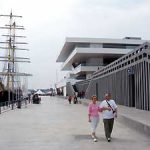
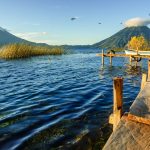
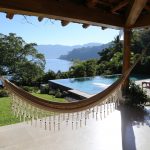

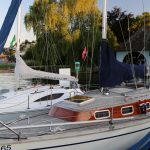

Leave a Reply